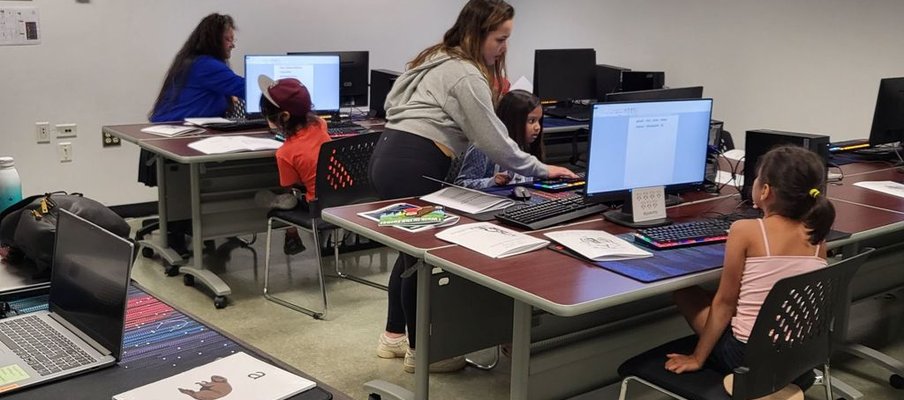Northern community uses art and technology in language revitalization project

Related Programs

Visual artist, Michéle Mackasey has always felt strongly about the importance of language. In 2023, she knew her next art project would have to somehow advance language revitalization in an inclusive and accessible way that would give youth and their families the opportunity to learn by using a hands-on approach.
After seeing online interactions that utilized the Dene language on social media platforms, she decided on an art project that would further develop how the Dene language could be more easily communicated by using technology. The project was part of the Northern Languages Program funded through the Northern Youth Cultural Fund, and led with the support of local Elders and educators.
“As a French speaker who grew up with the privilege of plenty of access to my language, you begin to wonder why it isn’t a ‘right’ for Indigenous communities to continue to learn, read and write in their own language to keep that language alive.” She has been visiting the Denesuline communities of English River First Nation, Patuanak, Beauval, and the nearby Métis community of Île-à-la-Crosse, for nearly three decades.
To help support the technological elements, Mackasey involved her son Ezaneh with the project. “The prospect of combining modern technology with traditional knowledge to support language learning and cultural exchange was incredibly compelling to me,” he says. “It’s about creating bridges between generations and facilitating conversations that might otherwise have been lost.” His experience in keyboard development and creation, as well as a strong desire to keep his Denesuline language alive was the driving force for creating the world’s first Dene language keyboard for the project.
“By integrating Dene language keyboards into our digital strategy, we empower future generations to actively connect with their cultural roots, ensuring that the Dene language remains a vibrant and integral part of daily life,” says Ezaneh.
According to Mackasey, the art project was inspired by a photograph of a young woman who died in the community’s residential school in her early teens due to medical neglect. Mackasey used the photograph to guide community conversations. “This is the irreparable damage that has been caused to multiple generations in so many communities and families and individuals,” she says.
The project included many phases and steps, involving a wide range of age groups. She has encouraged the youth involved to use the language keyboards to write messages inspired by the photograph in their Denesuline languages. These messages will eventually be engraved onto an estimated 17,000 tiny bottles, which will then be meticulously put together as a large-scale replica of the photograph of the young woman. According to Mackasey, the idea is to both acknowledge and process the past, while also carrying the Denesuline language into the future.

